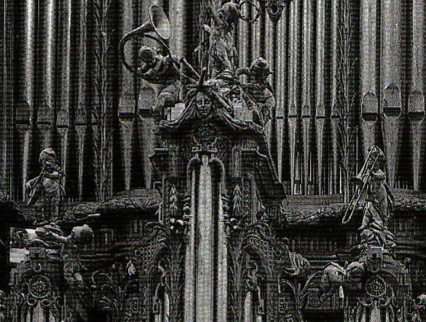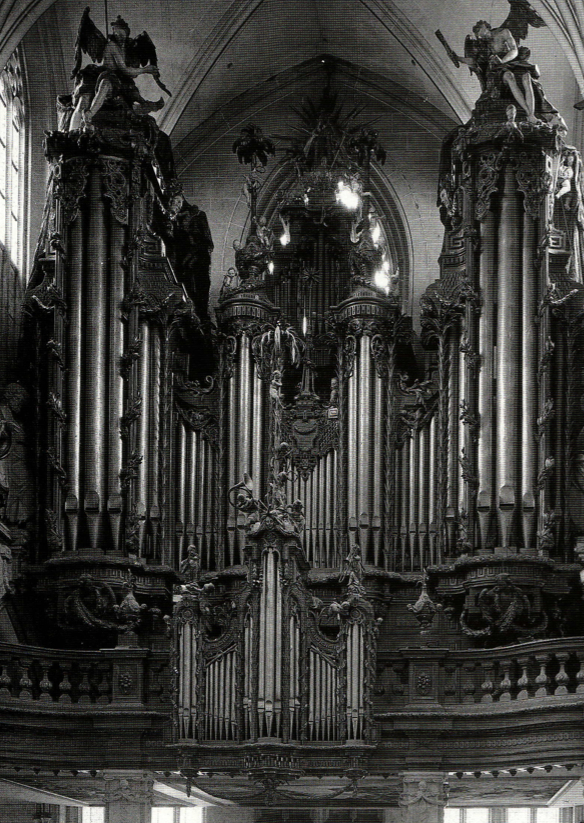I’ve recently added quite a few images of trombone sculptures on organs to the Trombone History Timeline. The dates of origin of these sculptures are difficult to nail down, as the organs on which they are housed tend to have multiple re-builds and renovations throughout their given histories; it is very likely that I have some of the dates wrong. Nonetheless, they make an interesting little collection of images. For example, 1) with one possible exception, they all appear to depict angel-trombonists, 2) the depictions date from somewhat later than many other depictions of angel-trombonists, and 3) as opposed to a large portion of sacred trombone iconography, which appears to be centered in northern Italy, this set of iconography is centered in Germany. Obviously, the importance of the trombone in German sacred music (and the German religious tradition in general) is a likely factor.
____________________________
1631—Braunschweig (Brunswick), Germany: The organ case at Martinikirche (St. Martin’s Church) features a pair of trombone-playing angels (see detail and wider detail below; special thanks to Raymond Faure).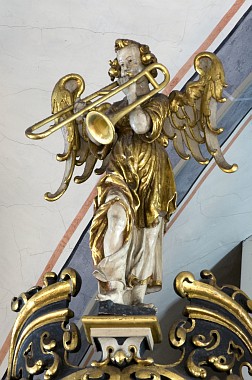
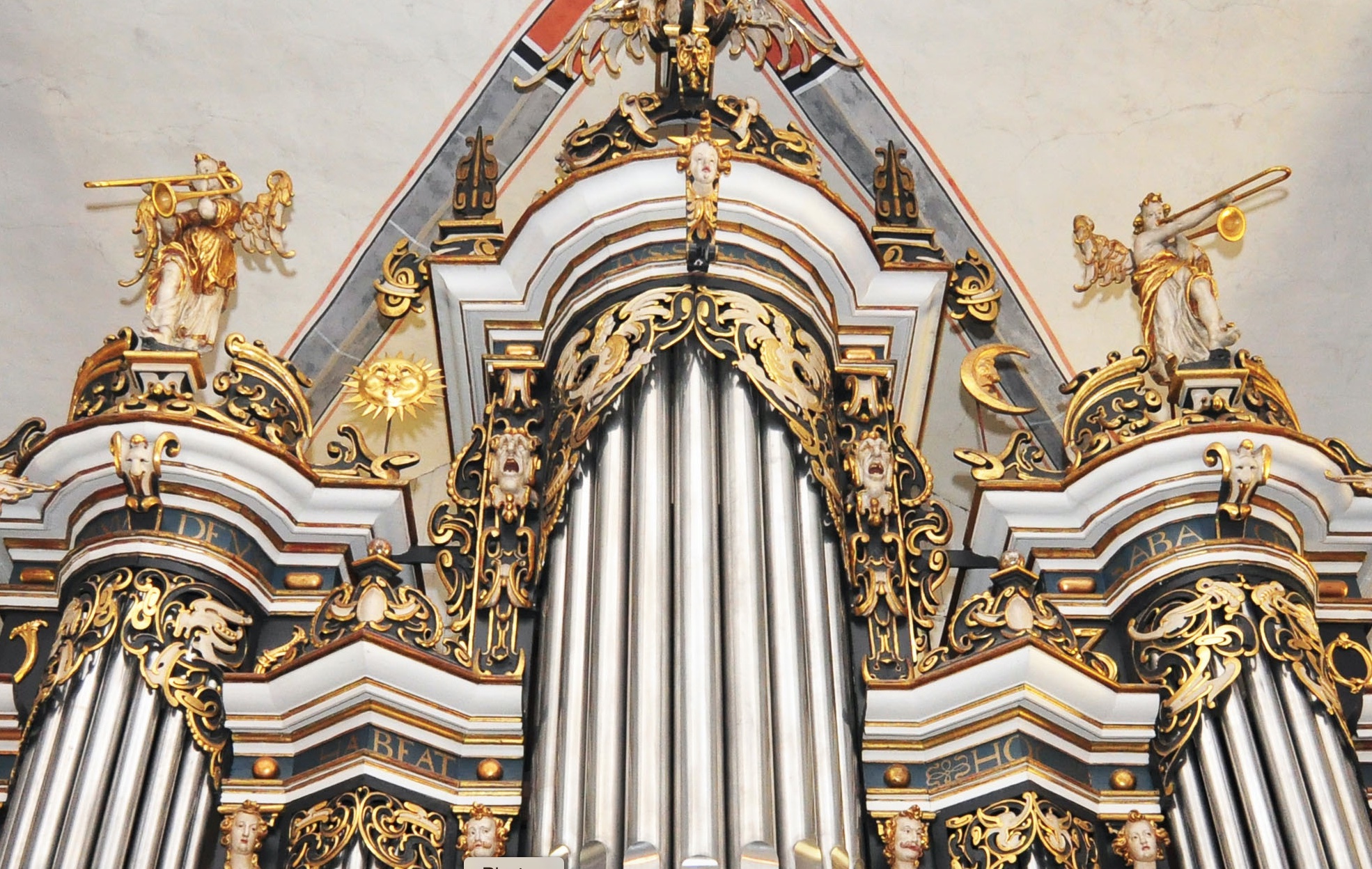
1643—Berne, Niedersachsen, Germany: Renovations of the organ at St. Aegidius Church are completed by Harmen Kröger. It is probably at this time (or possibly at the 1714 renovation by Christian Vater) that a sculpture of a trombonist is added to the organ case (see below image; public domain) (Seggermann 29, 53).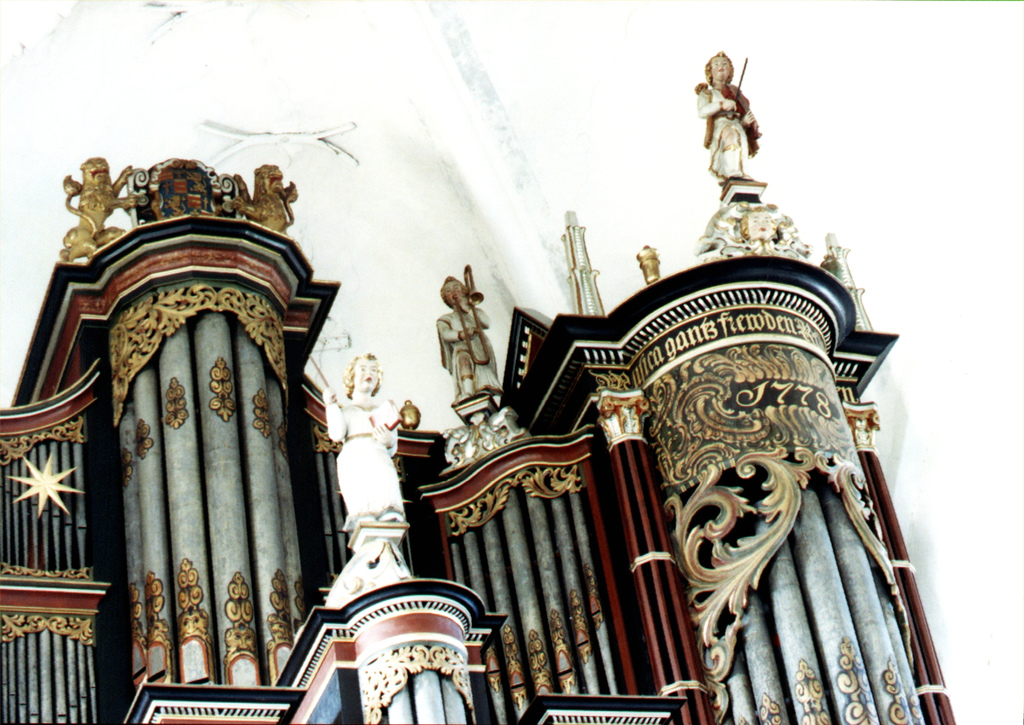
1658—Schöningen, Germany: Jonas Weigel completes the organ for St. Vincenzkirche, which includes a sculpture of an angel-trombonist on the organ case. The angel-musician on the opposite side plays the cornetto (see detail and full image below; public domain).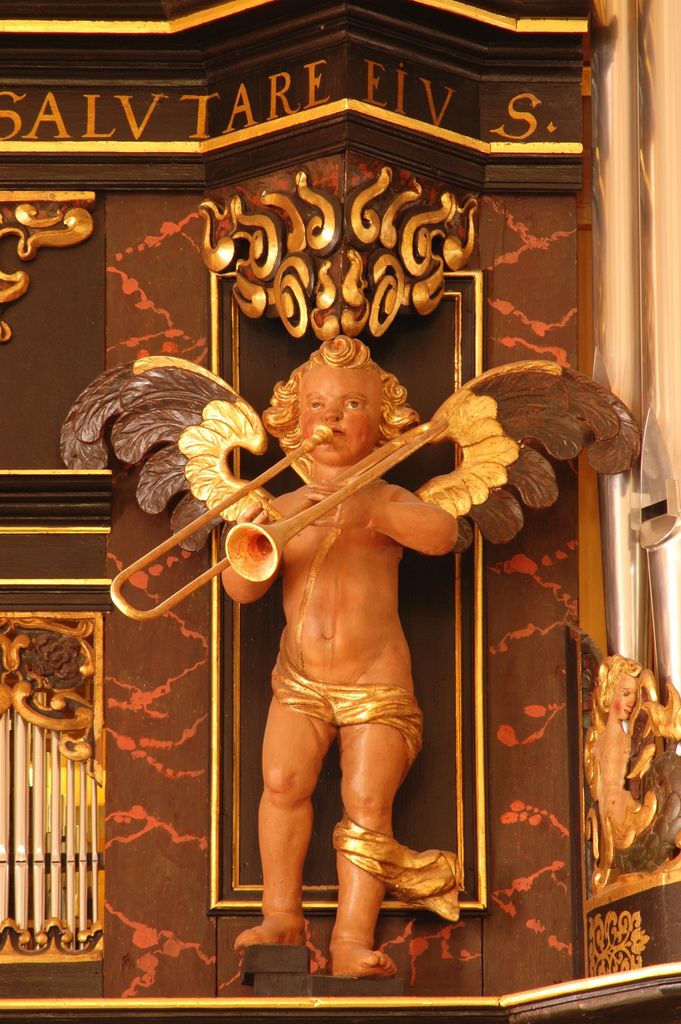
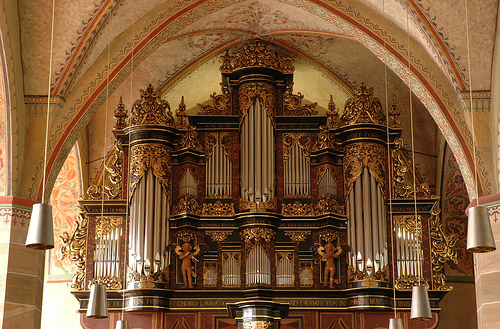 1680-1685—Frauenberg bei Admont, Austria: Wallfahrtskirche (Pilgrimage Church) installs an organ. Decorating the organ case are several angels with musical instruments, including a trombone. In addition, along the front of the organ loft are several panels featuring paintings of music-making angels, including one angel playing trombone (see below image; public domain) (Forer, Orgeln in Österreich 224).
1680-1685—Frauenberg bei Admont, Austria: Wallfahrtskirche (Pilgrimage Church) installs an organ. Decorating the organ case are several angels with musical instruments, including a trombone. In addition, along the front of the organ loft are several panels featuring paintings of music-making angels, including one angel playing trombone (see below image; public domain) (Forer, Orgeln in Österreich 224).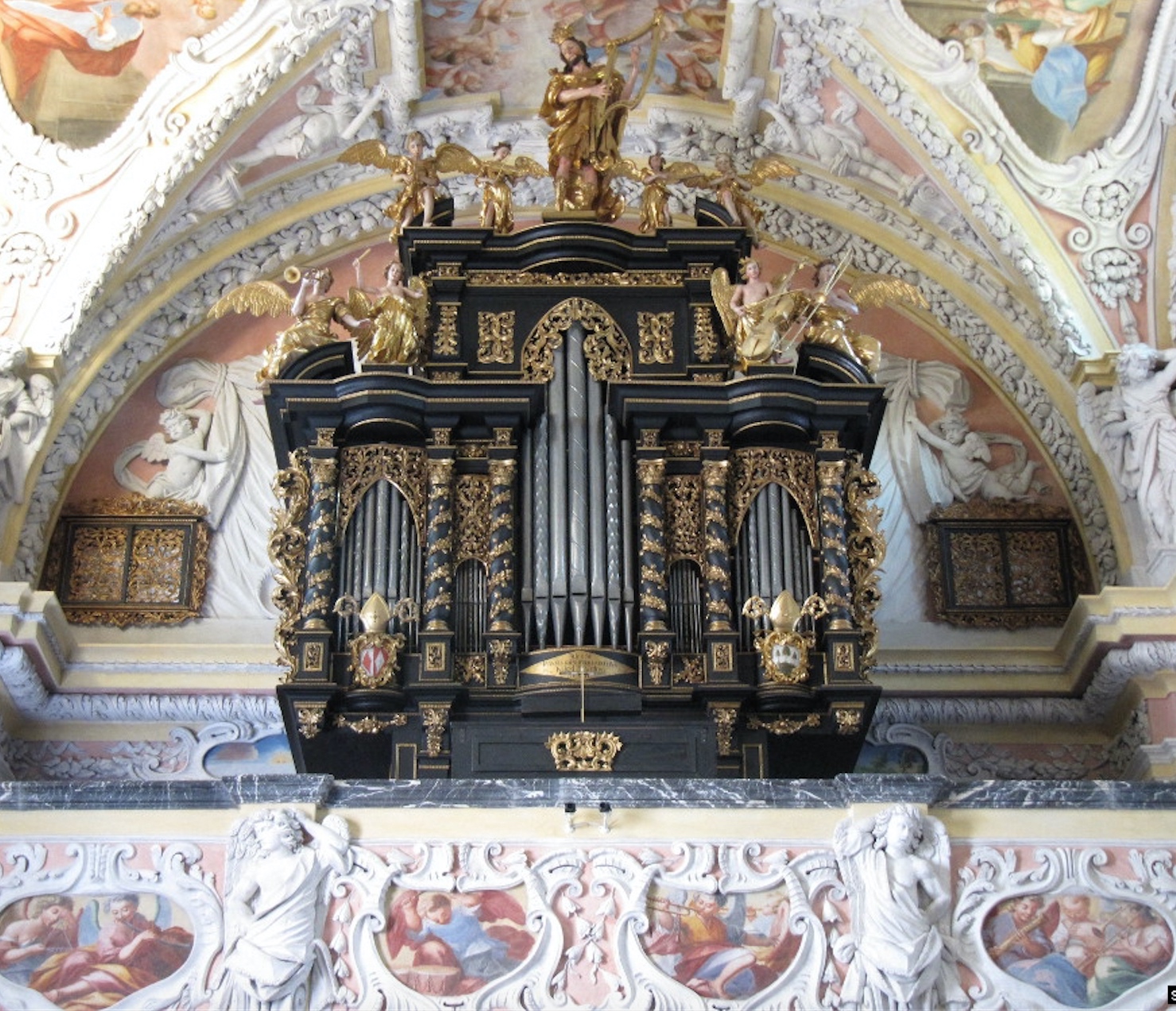
1697-1703—Görlitz, Germany: The famous organ by Eugenio Casparini in the church of St. Peter und Paul features decorative sculpures of angels sitting atop the pipe structure. Each angel holds 2 instruments; 2 of the angels, sitting on opposite outside edges of the structure, hold trombones while playing trumpets (see below detail for trombonist on right) (Sonnaillon 92).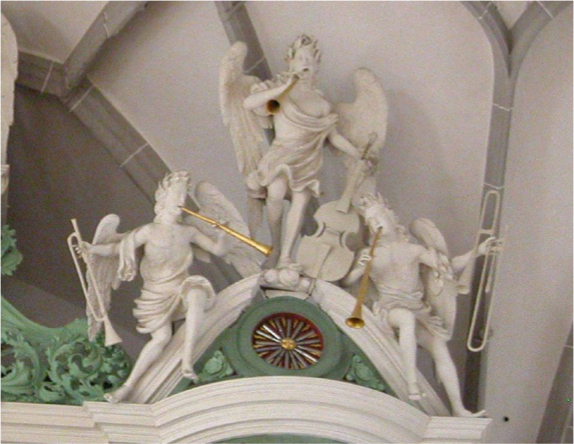
1701—Lauffen am Neckar, Germany: The organ housing at the evangelische Kirche St. Regiswindis includes 2 sculptures of angel-trombonists, the angels apparently playing one-handed (see detail and full image below; public domain) (Völkl 50).
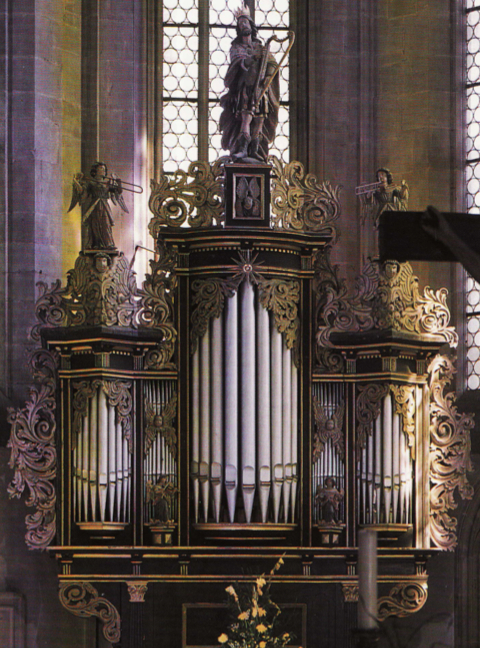
1714—Lüneburg, Germany: A major rebuild of the organ in Johanniskirche is completed by Matthias Dropa. One of several rebuilds and renovations after the organ’s original installation in 1551-53, it is probably this early 18th-century rebuild that adds the sculptures of what appear to be 2 angel-trombonists perched atop the organ pipes (see below detail; public domain).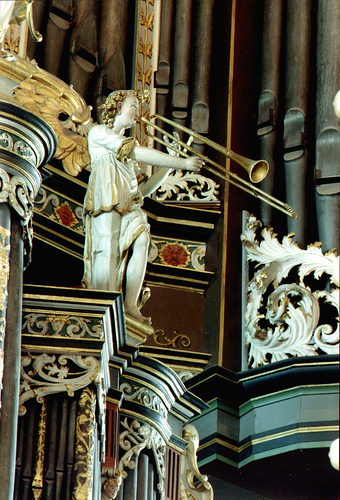
1740—Coburg, Germany: A Schuke organ is installed in St. Moriz Church. Atop the pipes are two angel-trombonists (see below image; public domain).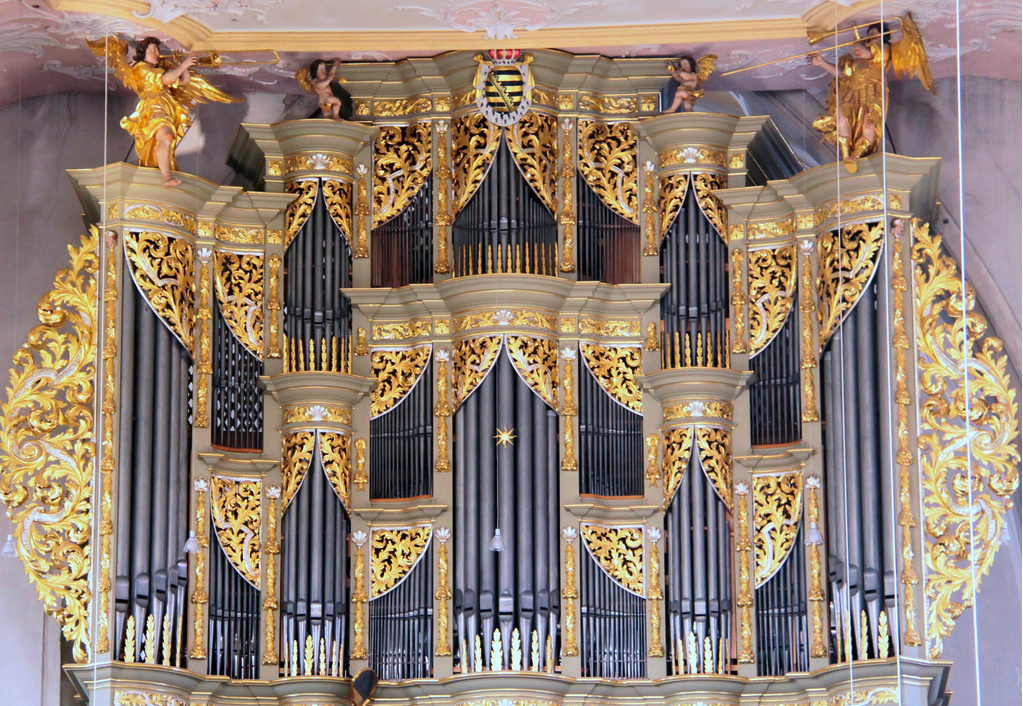
1746—Prague, Czech Republic: An organ by Tomas Schwarz is completed and installed in St. Nicholas Cathedral. Atop the pipes of the organ are numerous angels playing musical instruments, including trombones (see below image).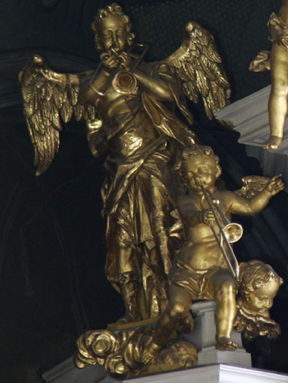
1754—Einsiedeln, Switzerland: The choir organ in Einsiedeln Abbey church is built. It is probably at this time that the organ is decorated as well, including a cherub holding a trombone (see detail and full image below; photos courtesy of Lukasz Michalski).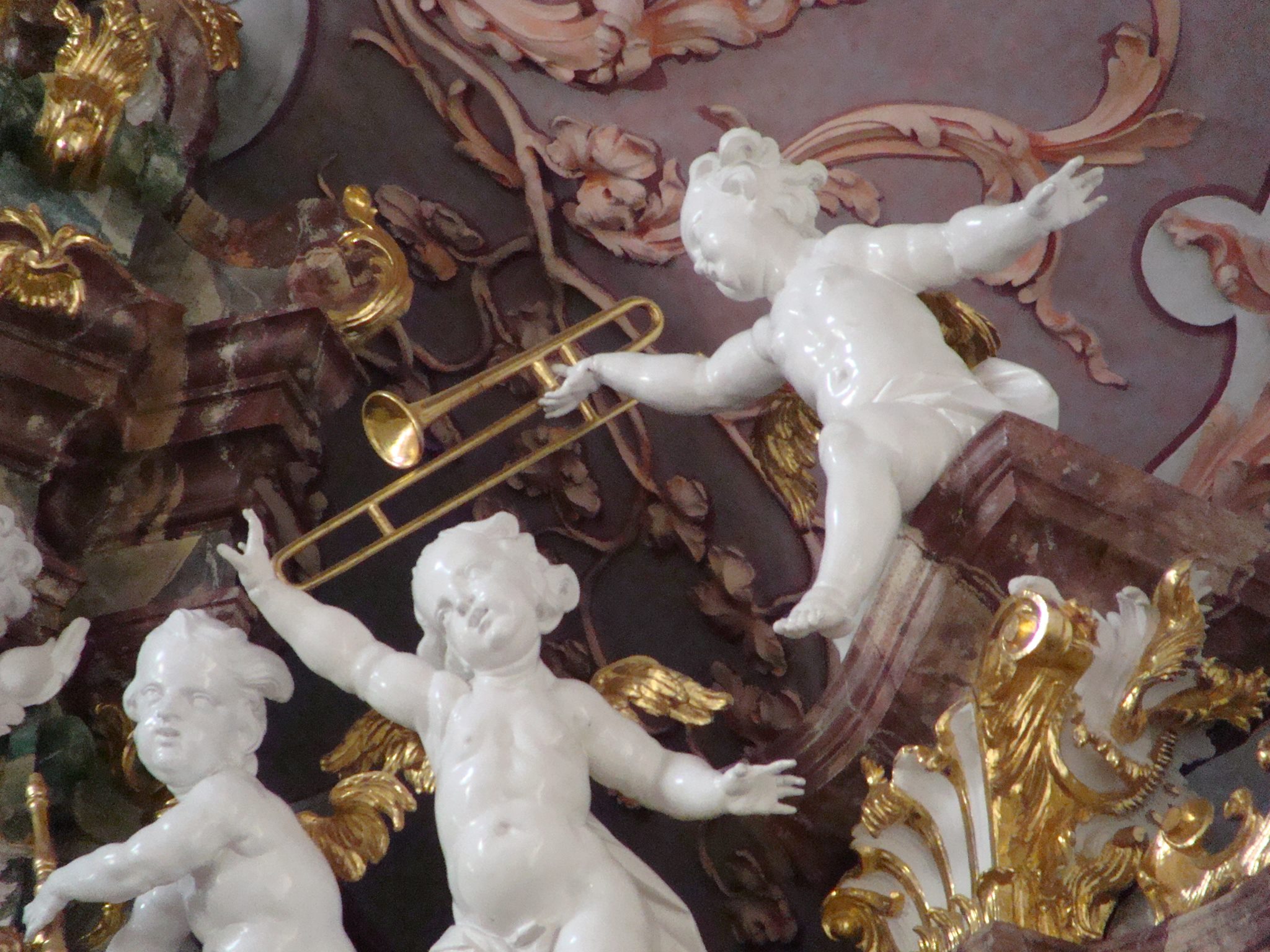
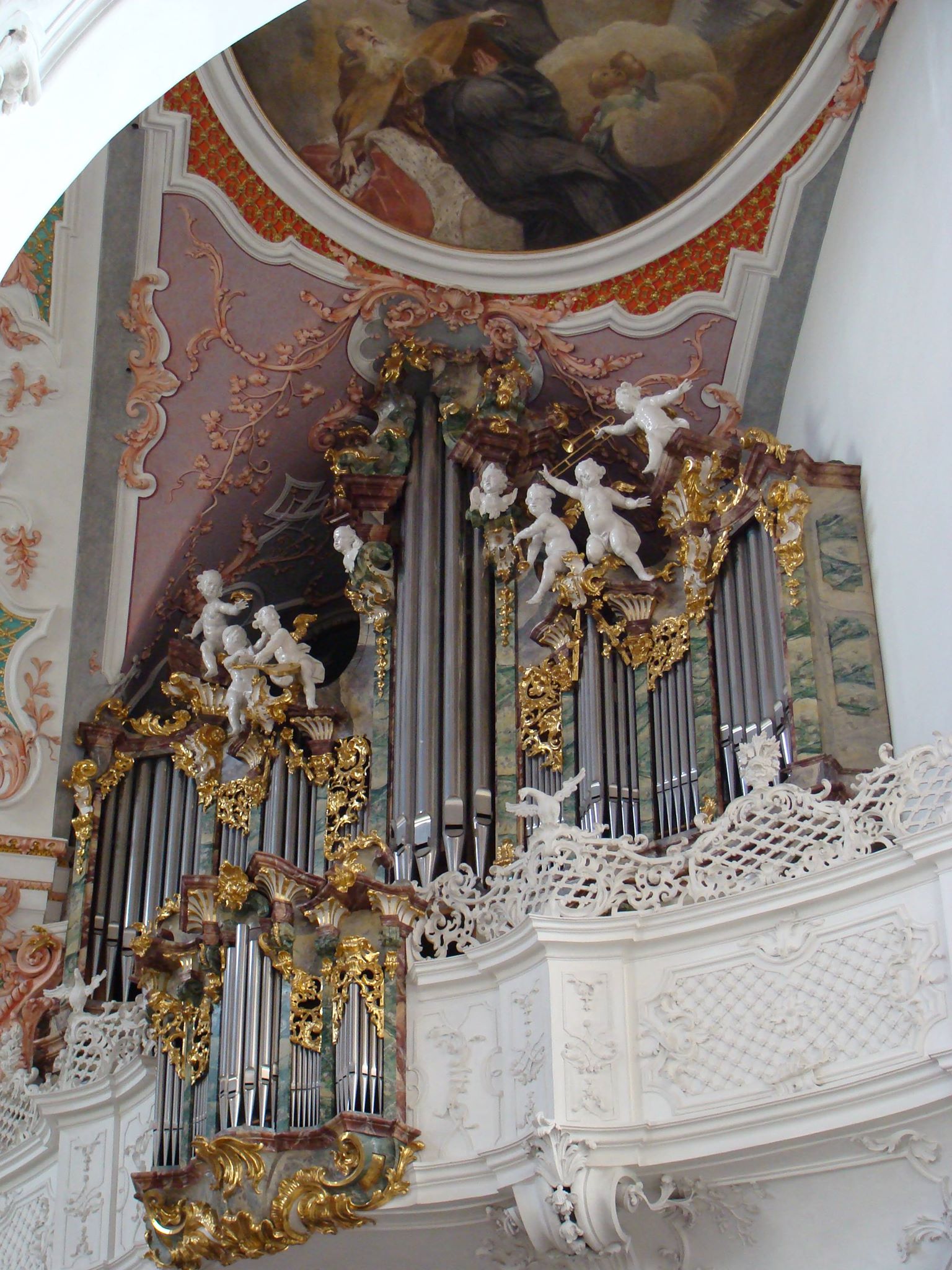
1770-73—Salem (Baden), Germany: The organ in Salemer Münster, or Salem Abbey, includes a sculpture of a trombonist atop a set of pipes (see detail and full image below; public domain) (Könner, Abb. 99; Wilson 101).